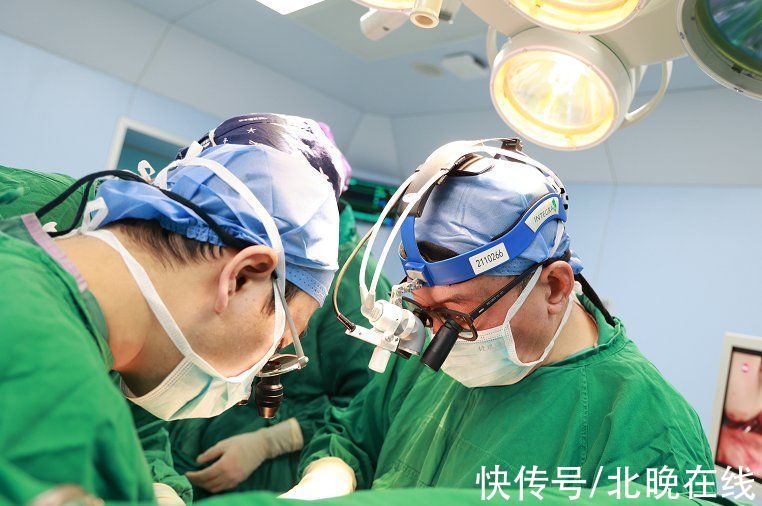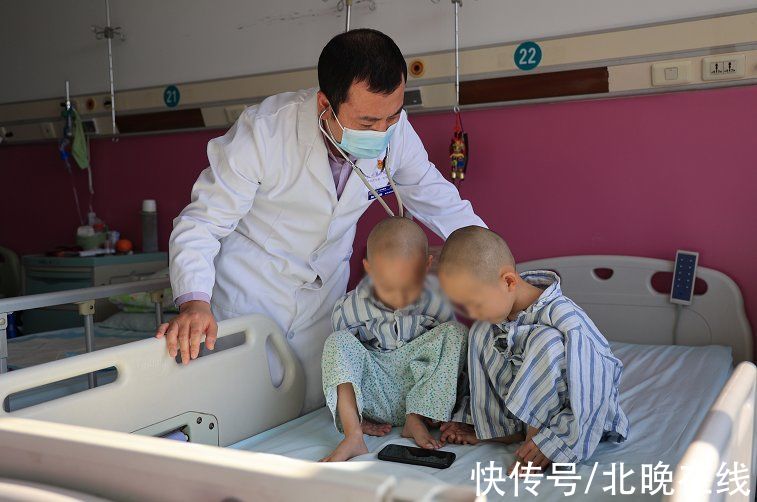Recently, a difficult cardiac surgery was performed at Beijing Huaxin Hospital (The First Affiliated Hospital of Tsinghua University). Xiao Kai, who underwent surgery, was a 6-year-old boy who was diagnosed with pulmonary atresia (type IV) and ventricular septal defect. This was his second thoracotomy. In 2016, Wu Qingyu, a famous cardiovascular surgery expert and chief consultant of the First Affiliated Hospital of Tsinghua University, performed a one-stage operation for the child. This time, it was also Wu Qingyu who performed the radical operation on the child.

Actually, Xiaokai has a twin brother named Xiaosong. At the end of 2015, just one month after birth, two children were hospitalized with sudden illness. This pair of children had more “purple” lips and limbs than other children, especially after crying. After the local hospital inspection, they were informed that the twins both suffered from an extremely complex congenital heart disease: pulmonary atresia and ventricular septal defect. The local hospital cannot treat it, and it is recommended that parents take their children to a higher-level hospital for treatment as soon as possible.
This is undoubtedly a bolt from the blue for young couples who are new parents. “They are still so young, we can’t give up!” In this way, the “distressed brothers and sisters” who were still in their infancy came to Beijing after going to many hospitals in their hometown of Yunnan.
In 2016, they came to a well-known cardiovascular disease hospital and completed relevant examinations after hospitalization. The elder brother Xiaosong was diagnosed with pulmonary atresia (type I); the younger brother Xiaokai was diagnosed with pulmonary atresia (type IV). Pulmonary atresia is a serious congenital heart disease. It is often divided into four types (I/II/III/IV) according to the degree of pulmonary vascular development and the supply of pulmonary blood. Xiaokai is the most serious type IV child. The hospital performed a first-stage corrective operation for his brother, but the younger brother was transferred to the Pediatrics Department of the Heart Center of the First Affiliated Hospital of Tsinghua University for further treatment due to his complicated condition and the difficulty of the operation.

How serious is Xiao Kai’s illness? To put it simply, he has no left or right pulmonary artery structure, and his survival depends on some body pulmonary collateral branches from the descending aorta to supply blood to the lungs to maintain oxygenation. To perform the operation for him, the collateral vessels of the body and lungs need to be found one by one and connected and sutured very finely.
When she came to the First Affiliated Hospital of Tsinghua University, Wu Qingyu carefully studied the preoperative examination of the child and performed a one-stage operation for the child: the pulmonary artery from the aorta was dissected and cut, and the “T” ducts are connected to form the left and right pulmonary arteries. Due to the need to wait for the further development of the pulmonary artery before radical surgery, the ventricular septal defect was preserved. The operation was very successful, all the indicators of the child returned to normal, the symptoms improved, and the child was discharged smoothly after the operation.
When I was discharged from the hospital, the doctor repeatedly instructed the parents to conduct regular check-ups, and decide the timing of the next radical operation based on the results of the check-up. After being discharged from the hospital, the Heart Center of the First Affiliated Hospital of Tsinghua University conducted a long-term follow-up observation on the twin brothers, and the parents have been looking forward to the opportunity to perform radical surgery on the brothers.
In January 2022, according to the results of follow-up examinations, the heart center believes that the child has the opportunity to undergo radical surgery. The mother brought the two brothers to the First Affiliated Hospital of Tsinghua University again. After completing the relevant examinations, Wu Qingyu led the pediatric cardiac surgery team to discuss the brothers’ conditions in detail and concluded that radical surgery is feasible for both children.
It is very important to judge the operation period of pulmonary atresia. Depending on the child’s condition and surgery, it is necessary to closely observe growth and development, blood oxygen saturation, heart valves and function. Some children may require multiple operations to fully restore the normal heart structure.
Before the Spring Festival, the operation came as scheduled. The operation of my brother Xiaosong was performed by Jin Yongqiang, the deputy chief physician of pediatric cardiac surgery at the Heart Center. The radical operation of pulmonary atresia was performed. The operation was very smooth. After the operation, Xiaosong was in the extracardiac care unit Had a “special” Spring Festival. After the careful treatment and care of the medical staff in the extracardiac intensive care unit, Xiaosong recovered quickly.
Just after the Spring Festival, the pediatric cardiac surgery team was busy preparing for the surgery for my brother Xiaokai. Because Xiao Kai’s condition was more complicated, the left and right pulmonary artery ducts that had been fused had obvious long-section stenosis, which made the operation more difficult. Wu Qingyu personally operated the surgery, performed a second thoracotomy, established cardiopulmonary bypass, thoroughly widened the left and right pulmonary arteries, repaired the ventricular septal defect, and used a new valved tube to connect the right ventricle to the pulmonary artery… After nearly 14 hours , with stable circulation indicators and 100% blood oxygen saturation on the intraoperative monitor, Xiao Kai’s operation was successful.
I got the news that the pressure and tears that the mother of the child had accumulated for too long was finally released. “Our family’s heart that has been hanging for so many years has finally calmed down.”
Source : Beijing Daily Client | Reporter Sun Leqi Correspondent Zhang Xiaoping
Process Editor: U022